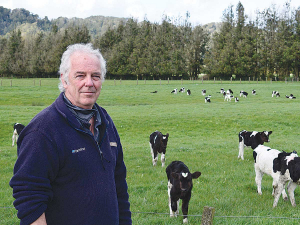2024/25 Dairy Statistics: NZ dairy farmers boost production with fewer cows
According to the New Zealand Dairy Statistics 2024/25 report, New Zealand dairy farmers are achieving more with fewer cows.
 FarmWise consultant Simon Pontin says the regrassing objective is to achieve a quality pasture producing paddock.
FarmWise consultant Simon Pontin says the regrassing objective is to achieve a quality pasture producing paddock.
Paddocks are among a farmer’s biggest and most important assets but occasionally they need a makeover in the form of regrassing.
There are several reasons why paddocks need to be regrassed. It maybe there are too many weeds, animals have damaged the paddock over winter, species have run out or low producing native grasses have taken over. Or it could be that the paddock has been in a crop and is now being ready to be rotated back into pasture.
The regrassing objective is to achieve a quality pasture producing paddock that will optimise the use of the land for your location and the farming system you use. If you’re not sure, get advice from your local seed merchant technical advisor and work through a plan with your farm advisor. They’re there to help you achieve the best from your land; with good species selection and preparation key components in a newly re-grassed paddock being really productive.
Walking the talk
I encourage all farmers to undertake pasture walks during the season noting down any poor performing paddocks. Pasture measurement information can also be added to MINDA (in the Land and Feed section) to enable farmers to see pasture gaps upfront and a more accurate ‘feed wedge’.
Once paddocks have been identified, there are several options for regrassing.
Crops – undertaking a cropping programme before re-establishing in grass
Whether summer or winter crops, the paddock can go through a crop before being put back into pasture. This has the benefit of having the paddock sprayed out typically three times for weeds before grass is re-established - thus minimising unwanted plants taking hold.
Direct drilling grass seed into the paddock
Direct drilling is the preferred method where possible to minimise nitrate losses or working a paddock up (cultivate) and then drilling and sowing. The process is to spray a paddock out and then after a few days direct drill or cultivate.
If you go to the effort of regrassing then I suggest the work is done as well as possible. It’s also an opportunity to fix a wet spot or rid the paddock of stubborn weeds. If there’s a particular weed issue then add targeted sprays to eradicate the problem. Correct the pH of the paddock at the start along with any capital fertilizer required to achieve the fertility desired. If there is a pan or the soil structure is compacted, a sub soil or deep cultivate would be beneficial.
Weeding out the good from the bad
I often see paddocks sprayed out and resown shortly afterwards that regresses to the original state quickly. These paddocks often have a large component of native grasses in them to start with.
Spraying them out is only half the problem as they have normally seeded and produced a great deal of seed dormant in the soil. Given some light and a little cultivation these seeds germinate competing with the seed sown. The answer is to invest three weeks of time to allow these weed seed grasses to germinate along with any broad leafed weeds and then do a second spray out. This will help increase the lifetime of the pasture by several seasons.
There’s a number of techniques to regrassing a paddock to consider depending on soil, terrain and rainfall amounts. Over time most paddock’s production will fall and at some stage they will need to be renewed to maintain a farms performance.
I recommend that care is taken to put right drainage, soil structure, and fertility, along with weed control to allow the grass sward the best possible start and optimise your land pasture production.
Grass seed – getting the right seed is critical
The best pasture will be one that suits your location, system and resources. Use the Forage Value Index (FVI) to review what seeds will perform best. Have a chat with your seed supplier and discuss availability and optimal choice for your location, soils and management system.
Once confirmed, get the order in to avoid delays so that it is ready for you once you are ready to sow. The sooner it’s in the ground, the sooner you’ll be on the way to improving the health of your paddocks and cows this coming season.
• Simon Pontin is a LIC FarmWise Consultant.
Last month's Agritechnica event led to a wide group of manufacturers celebrating successes when the 2026 Tractor of the Year Competition winners, selected by a panel of European journalists, were announced in Hanover Germany.
According to the latest Federated Farmers banking survey, farmers are more satisfied with their bank and less under pressure, however, the sector is well short of confidence levels seen last decade.
Farmer confidence has taken a slight dip according to the final Rabobank rural confidence survey for the year.
Former Agriculture Minister and Otaki farmer Nathan Guy has been appointed New Zealand’s Special Agricultural Trade Envoy (SATE).
Alliance Group has commissioned a new heat pump system at its Mataura processing plant in Southland.
Fonterra has slashed another 50c off its milk price forecast as global milk flows shows no sign of easing.